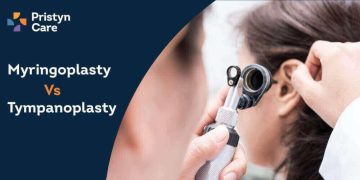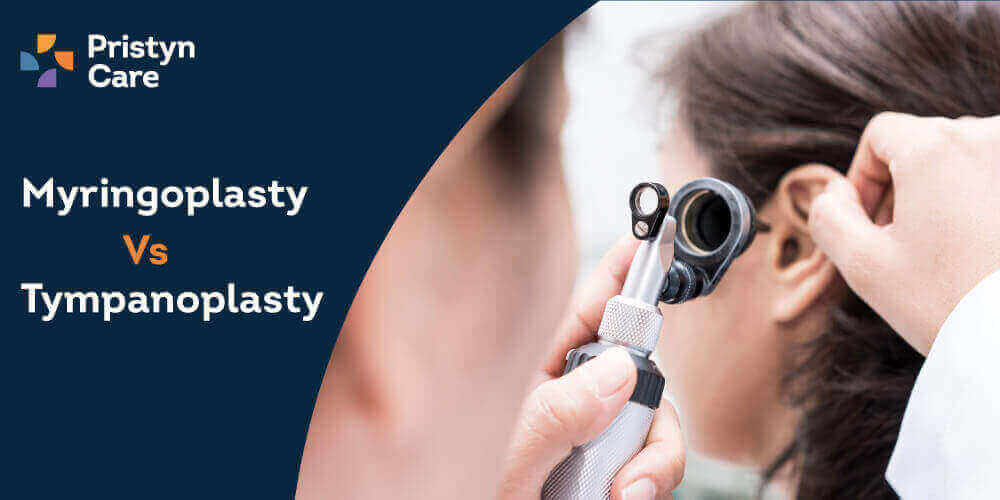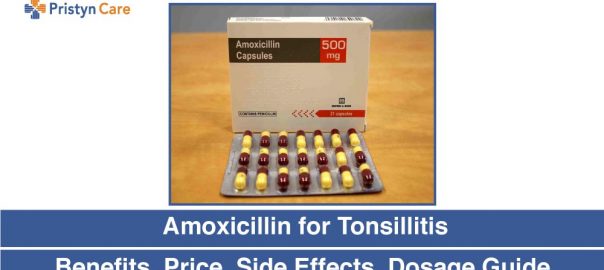![]() Views: 977
Views: 977
Myringoplasty vs Tympanoplasty
Dedicated Support at Every Step!
Our Doctors are available 24 hours a day, 7 days a week to help you!
Call Us0806-541-7961How is Myringoplasty Performed?
Myringoplasty, a surgical procedure that helps repair perforations in the eardrum (tympanic membrane), is a delicate operation that requires utmost precision. Here's a simple breakdown of how it's done:
- The patient is generally put under general anaesthesia, although local anaesthesia can be used in certain cases.
- The surgeon utilises graft material, often the temporalis fascia, to seal the hole in the tympanic membrane.
- This grafting can be done using two main techniques: the underlay and overlay methods.
- Underlay Technique: The graft material is placed medial to (inside) the remaining eardrum tissue.
- Overlay Technique: Conversely, the graft goes lateral to (outside) the remaining eardrum tissue.
- The choice between these techniques depends on factors like the size and location of the perforation, along with the surgeon's preference and experience.
The whole operation usually takes anywhere between 30 to 90 minutes. With success rates around 90%, myringoplasty has proven effective in restoring an intact eardrum and improving hearing issues caused by eardrum perforations.
Table of Contents
How is Tympanoplasty Done?
Tympanoplasty, the surgical procedure intended to repair a perforated eardrum, is undertaken in carefully planned steps:
- Preparation: A hearing test is conducted to assess the patient's initial hearing abilities. The patient undergoes a preoperative check-up to ensure they are healthy enough for surgery.
- Procedure: The surgery is performed under general anaesthesia in an operation theatre (OT) by an ENT surgeon. The duration can vary from 30 minutes to 2 hours or more, depending on the severity of scar tissue formation and the size of the perforation.
- Types of Tympanoplasty: Depending on the size and location of the perforation, the surgeon may choose between two variations - the underlay technique and the overlay technique.
- Closure of Perforation: The surgeon uses a graft material, typically temporalis fascia, to seal the perforation. This watertight seal prevents further bacterial growth and protects the middle ear.
- Postoperative Care: Post-surgery, patients are advised to keep their ears dry for several weeks and follow specific postoperative care instructions for successful healing.
Patients can better prepare for this procedure and its aftermath by understanding the steps involved in tympanoplasty.
No Cost EMI, Hassle-free Insurance Approval
Who is a Good Candidate for Myringoplasty?
A fitting candidate for myringoplasty typically has a small, stubborn perforation in their tympanic membrane (ear drum) which doesn't heal naturally. This could potentially lead to chronic otorrhoea (ear discharge), conductive hearing loss, and other complications. Here's a checklist:
- You have a perforation that doesn't respond to simple treatments like ear drops or antibiotics.
- The perforation is dry with no significant ossicular problems (middle ear bone issues) or cholesteatoma (abnormal skin growth in the middle ear).
- You don't suffer from severe sensorineural hearing loss as this may need other treatments.
Who is a Good Candidate for Tympanoplasty?
Tympanoplasty, a surgical procedure, may be recommended by your doctor if you have a perforated eardrum or damage to the minuscule bones in your middle ear. You might experience symptoms such as recurrent ear infections, hearing loss, tinnitus (ringing in the ears), vertigo (dizziness), or fluid build-up behind the eardrum.
This surgery is particularly helpful for those whose eardrum damage isn't healing naturally and leads to chronic otorrhoea or conductive hearing loss. A few key indicators suggesting you're a good candidate for tympanoplasty include:
- Persistent non-healing eardrum perforation causes recurrent ear discharge.
- Conductive hearing loss impacts daily life.
- Frequent ear infections, especially in high-risk groups like swimmers.
Remember, it's always important to consult with your doctor about your medical condition before deciding on any treatment option.
When is Myringoplasty Needed?
Myringoplasty, a surgical procedure, is typically needed when an individual suffers from a persistent perforation in their tympanic membrane, often bringing about conditions such as chronic otorrhoea or conductive hearing loss. Here are the common indicators for undertaking this procedure:
- Chronic Otorrhoea: Myringoplasty helps halt recurrent infections and related complications.
- Desire for Water Activities: Post-procedure, individuals can engage in water-based activities without fearing damage to their ears.
- Conductive Hearing Loss: The process aids in augmenting hearing abilities, minimising the impact of hearing loss on daily life.
This surgery is most effective for patients with small, dry perforations located primarily in anterior or central regions, particularly those unresponsive to conservative treatment.
When is Tympanoplasty Needed?
Tympanoplasty becomes a necessity when a persistent puncture in the tympanic membrane (your eardrum) leads to chronic otorrhoea (ear discharge), conductive hearing loss, or other complications. Here's when you might need this procedure:
- Persistent Ear Discharge: Tympanoplasty can help put a stop to recurrent infections and the complications that follow.
- Frequent Water Exposure: If you're someone who loves swimming or other water activities but worries about protecting your ears, this procedure can provide a waterproof solution for your middle ear.
- Conductive Hearing Loss: If hearing loss is impacting your daily life, tympanoplasty could significantly improve it.
Risks of Myringoplasty
While myringoplasty, an operation to repair a hole in the eardrum, is generally safe, it does have some potential risks. These include:
- Infection: This can cause discomfort, bleeding and inflammation.
- Tinnitus: You may experience temporary or lasting ringing in the ears.
- Dizziness: Some patients feel dizzy post-surgery due to inner ear irritation.
- Hearing loss: A small percentage (3%) of patients might face permanent hearing impairment.
- Graft failure: There's a slight chance the graft doesn't meld well with the eardrum.
- Taste disturbances & Mouth dryness: These are common but usually temporary side effects.
- Facial paralysis: Short-lived paralysis on one side of the face might occur due to nerve swelling.
- Hematoma: Blood clots may form, potentially requiring further surgery.
It's essential to discuss these risks with your doctor. However, remember these complications are generally rare and manageable with appropriate care.
Risks of Tympanoplasty
Tympanoplasty, like any surgical procedure, has potential risks. However, with appropriate care and follow-up, these are generally manageable:
- Infection: The most common complication, causing discomfort due to pain, bleeding and inflammation.
- Tinnitus: Some patients may experience persistent ringing in the ears post-surgery.
- Dizziness: Temporary dizziness can occur due to irritation of the inner ear structures.
- Hearing loss: A small percentage (3%) of patients may face permanent hearing impairment due to healing issues.
- Graft failure: There's a slim chance that the graft might not integrate with the eardrum.
- Taste disturbance and mouth dryness: These are usually temporary effects.
- Facial paralysis: Temporary paralysis is possible but typically subsides on its own.
- Hematoma: This may prolong healing and necessitate additional surgery to remove the clot.
- Anesthesia complications: Though rare, these could be serious and require detailed discussion with your anesthesiologist.
- Mastoid surgery complications: Rare but include cerebrospinal fluid leaks and serious complications like meningitis or brain abscess.
Recovery after Myringoplasty
Recovering from a myringoplasty usually takes several weeks to months. Here's what you need to know:
- Initial Recovery: On the day of the surgery, patients usually head home and are advised to take it easy for about two weeks. Moderate pain may be experienced, which can be managed with simple over-the-counter pain medication.
- Follow-up Care: Within two weeks post-surgery, patients have a follow-up appointment with the ENT specialist who assesses healing progress and may remove stitches if needed.
- Avoiding Water and Heavy Lifting: Activities involving water or heavy strain on the eardrum such as swimming or lifting heavy items should be avoided for a few weeks.
Recovery After Tympanoplasty
The road to recovery post-tympanoplasty, like most surgeries, is a stepwise journey that lasts several weeks to months. Here's what you might expect:
- Initial Recovery: On the day of the operation, you'll typically be able to go home. For the following 10 days to two weeks, it's important to take things easy. Over-the-counter medicines can help manage any moderate pain.
- Follow-up Care: You'll usually need a follow-up visit with your ENT specialist within two weeks of surgery. They'll check on your healing progress and may remove stitches, if necessary.
- Avoiding Water and Heavy Lifting: Keep water out of your ear and refrain from heavy lifting or strenuous exercise for several weeks. This also includes activities like flying, swimming, and contact sports.
Remember, full recovery time varies between individuals. Always consult your doctor if you notice any unusual symptoms during your recovery period.
Key Differences Between Myringoplasty and Tympanoplasty
| Characteristic | Myringoplasty | Tympanoplasty |
| Type of Surgery | Surgery to repair the tympanic membrane (eardrum) without entering the middle ear | Surgery to repair the tympanic membrane and address any middle ear pathology by entering the middle ear |
| Surgical Approach | Does not involve the elevation of a tympanomeatal flap | Involves the elevation of a tympanomeatal flap to access the middle ear |
| Surgical Technique | Graft material (e.g. temporalis fascia) placed over the perforation | Graft material placed in the middle ear space |
| Success Rates | Reported success rates around 90% in restoring an intact tympanic membrane | Reported success rates vary widely, ranging from 35 to 95% |
FAQs:
- How painful is myringoplasty?
A: Myringoplasty is typically not very painful. Patients may experience mild discomfort or soreness around the ear after surgery, which can usually be managed with pain medications prescribed by the doctor.
- Does myringoplasty improve hearing?
A: Yes, myringoplasty is performed to repair the tympanic membrane (eardrum) and can often lead to improved hearing, especially if the hearing loss is due to the perforation in the eardrum.
- Can myringoplasty be done in all age groups?
A: Myringoplasty can be performed on patients of various age groups, including children and adults. The suitability for surgery would depend on individual health factors and the specific condition of the eardrum.
- Can I travel after myringoplasty?
A: Travel plans should be discussed with your doctor. In general, avoiding air travel for a few weeks after myringoplasty is advisable to allow the ear to heal properly and reduce the risk of complications.
- How do you sleep after myringoplasty?
A: It's recommended to sleep with the head elevated for the first few nights after myringoplasty to reduce swelling and promote healing. Patients may also be advised to sleep on the non-operated side to minimize pressure on the ear.
- Is tympanoplasty a major surgery?
A: Tympanoplasty is considered a major surgery, as it involves repairing or reconstructing the eardrum and sometimes the middle ear bones (ossicles). It is usually performed under general anaesthesia in a hospital setting.
- Do I need a hearing device after tympanoplasty?
A: In many cases, tympanoplasty can improve hearing sufficiently without the need for a hearing device. However, this depends on the extent of hearing loss before surgery and any additional conditions affecting hearing.
- Is tympanoplasty expensive?
A: The cost of tympanoplasty can vary widely depending on factors such as the hospital, surgeon's fees, anaesthesia costs, and any additional tests or medications required. It's advisable to check with your healthcare provider or insurance company for specific cost estimates.
- Which doctor to consult for tympanoplasty?
A: A specialist known as an otolaryngologist (ENT specialist) is the primary doctor who performs tympanoplasty. They are trained in treating conditions related to the ears, nose, and throat.
- Which doctor to consult for myringoplasty?
A: Similarly, an otolaryngologist (ENT specialist) is the doctor to consult for myringoplasty, as they specialize in diagnosing and treating conditions affecting the ears, including tympanic membrane perforations.
References
- https://www.ncbi.nlm.nih.gov/pmc/articles/PMC3272871/
- https://www.healthdirect.gov.au/surgery/myringoplasty
- https://vula.uct.ac.za/access/content/group/ba5fb1bd-be95-48e5-81be-586fbaeba29d/Myringoplasty%20and%20tympanoplasty.pdf
- https://www.sciencedirect.com/science/article/pii/S1672293023000533
- https://pubmed.ncbi.nlm.nih.gov/17364170/
- https://www.ncbi.nlm.nih.gov/pmc/articles/PMC4881877/
- https://www.healthline.com/health/eardrum-repair
- https://www.webmd.com/a-to-z-guides/what-to-know-ear-drum-repair-tympanoplasty











